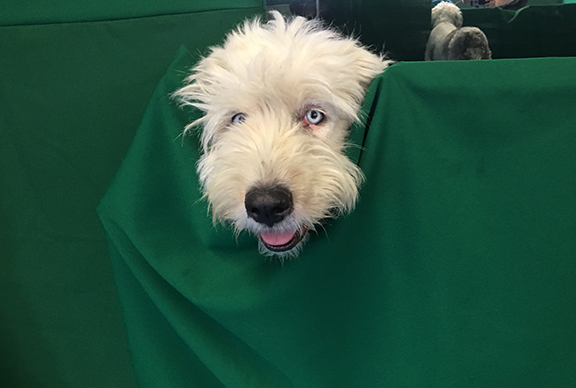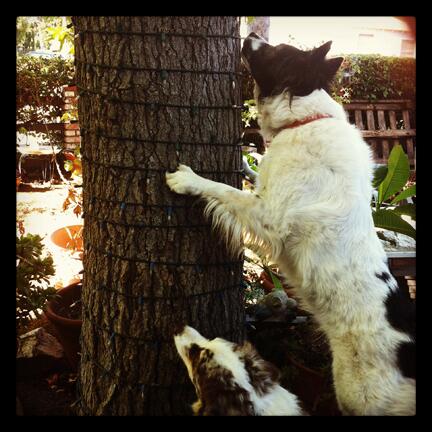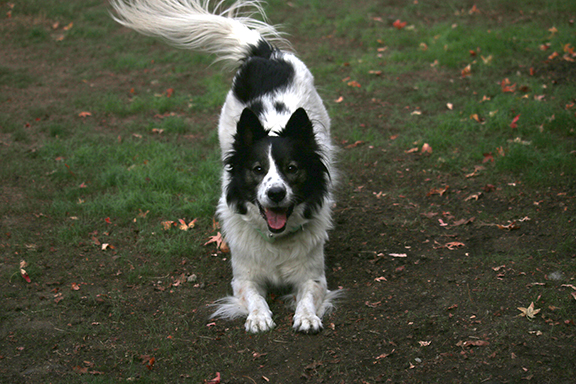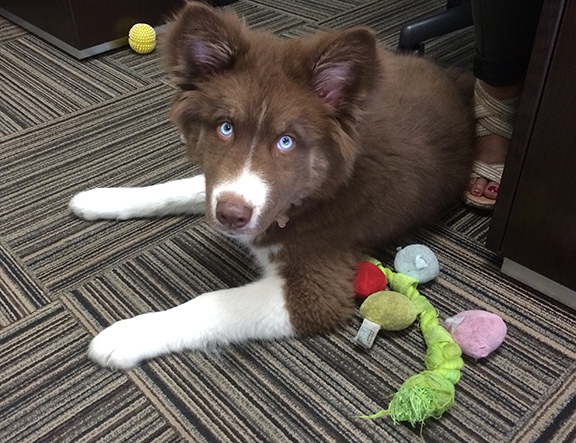
I’ve been working with rescue dogs long enough to really wish that they’d come with a vocabulary chart. This hand wave means “down,” this head nod means “ok.” Whether the dog has had formal training or not, they have visual and verbal cues that they’ve come to associate with actions. This can sometimes get in the way of any training you’re planning on doing. Want to teach your dog to target your hand? What happens if the palm out signal means “stay”?
When I work with a new rescue dog or bring one home, I try a multitude of hand signals and words to see if anything brings an action and what the reaction to that action is. “Down” may have been taught with a lot of force and while the dog is going down so are the ears and head. Note to self – teach another word for “down”.
For a lot of rescues certain items can cause stress or fear. I’ve had dogs afraid of brooms, hoses and squirt bottles. Fear of these things gives you a good indication of the previous treatment of the dog and some items that will need to be worked on. Imagine giving a dog a bath that’s afraid of the hose! It’s better to start as soon as you figure out the fear trigger and not when you really need it.
If the response to a word or visual cue does not cause stress, keep it! It may mean altering your usual hand signals or vocabulary, but it gives you something to give a treat for and a starting place for further training. If the cue is causing stress, change it and don’t use it for anything else. For example, palm out for dogs that have been hit will cause a problem for a “stay” signal since they’ll jerk or cower. Come up with something else, don’t force a new meaning on a poisoned cue.




